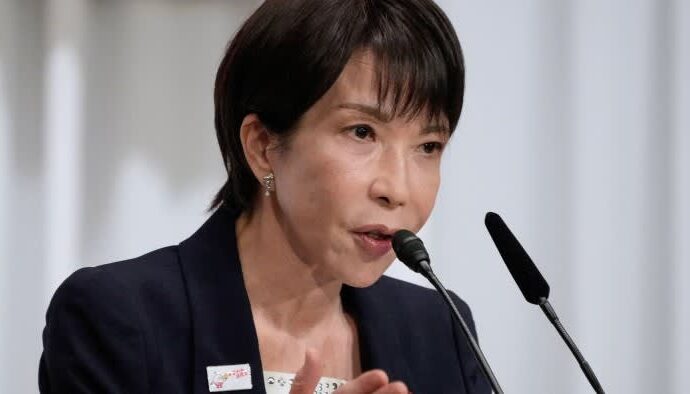Unlock the Editor’s Digest for free
Roula Khalaf, Editor of the FT, selects her favourite stories in this weekly newsletter.
One of Hong Kong’s biggest beverage brands is fighting back with more exotic flavours of its best-selling bottled tea, as sales are squeezed by a price war with traditional rivals and a fresh-brew trend sweeping China.
Vitasoy aims to focus on products appealing to a younger generation, including “fragrant duck poo tea”, named after a popular type of oolong tea from southern China’s Chaozhou. It is also a common flavour among freshly made teas.
The company has become a victim of a consumer trend that could create a “Starbucks for tea drinkers in China”, according to an HSBC report in June. Analysts said demand for new-style tea beverages was “growing rapidly, led by young consumers seeking inexpensive places to meet friends, trendy products, customised service, and content for social media posts”.
“The [segment] of fresh beverage . . . that’s quite appealing,” Vitasoy chief executive Roberto Guidetti said in a Financial Times interview. “There has been a big growth in the on-premise businesses by coffee shops, teashops, and these chains have become very, very big.”
Founded in 1940, Vitasoy began by making high-protein soy milk at a time when malnourishment was common due to the ravages of the second world war.
In the decades that followed, it expanded into tea beverages and launched its signature ready-to-drink lemon and chrysanthemum tea in the 1970s — helping it become one of the most well known brands in the territory.
Its recent struggles in China highlight the growing pressure on established businesses to respond to nimble and innovative Chinese brands that are gaining market share and slashing prices.
“We see the potential increasingly in innovation,” Guidetti said. Other new flavours such as “low-sugar white peach soy milk” are being rolled out this year in both the mainland China market and Hong Kong, aimed at catering to Chinese consumers wanting healthier drink products.
Hong Kong’s deeper integration with mainland China poses a challenge for Vitasoy and other local brands, said Yaling Jiang, an independent Chinese consumer analyst.
“If they cannot create a new brand narrative apart from playing into the old HK nostalgia . . . it will be hard to achieve meaningful growth in the next few years,” she said.
Vitasoy’s fresh-brew rivals see a market ripe for expansion.
In 2023, the per capita consumption of freshly made beverages, including tea, was 22 cups in China, much lower than 172 cups in Japan, 225 cups in the UK and 323 cups in the US, according to HSBC and China Insights Consultancy data.
With the freshly made teashop market growing by an average of 25 per cent annually from 2021 to 2023, there were 660,000 shops by the end of 2024, with 4,000 to 5,000 brands, CIC reported.
Market leaders, including Mixue, Guming and Auntea Jenny, each rolled out more than 100 new products last year, with “peachy spring oolong tea” and “jasmine milk green tea” among the most popular.
“[In China] you don’t need to walk a lot to find one [of the freshly made tea shops],” said Guidetti. “People are willing to say: ‘I’m going to pay Rmb2 or Rmb3 more, but I really want this’, as opposed to when you go to the shelf [and] choose what is there.”
Vitasoy, which also counts Australia and New Zealand as significant markets for its soy milk products, has seen sales weaken in China as it pursues a short-term goal “to sustain scale and profitability” there.
Mainland revenues, which accounted for 54 per cent of total sales in its year to the end of March, only grew 1 per cent in local currency terms from the previous year.
In addition to being challenged by booming tea chains such as Mixue and Chagee, Vitasoy has been engaged in a price war with rival bottled beverage brands, including Nongfu Spring and Wahaha, which threatens to narrow profit margins further.
Before 2020, some brands were selling their 500ml bottled drinks in China at Rmb7 to Rmb8 (about $1), said Guidetti, but there had been “an inversion of this” with prices dropping to around Rmb5.
“The market has seen a bit of value erosion, [which is] not ideal,” he said. “[But] it’s [still] possible to add value creation . . . as the economy maybe [bounces] up a bit, it’s going to recover.”


